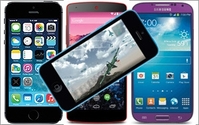
Being happy with one’s smartphone (and the likelihood of purchasing the same kind of smartphone later) is becoming more closely tied to the system powering it than the bells and
whistles it provides.
According to J.D. Power & Associates’ most recent Wireless Smartphone Satisfaction Study, the operating system that powers a phone is becoming
an increasingly important driver behind device selection, user experience and brand satisfaction.
“When people are considering their smartphones, we’re hearing
more about the operating system,” Kirk Parsons, senior director of telecommunications services at J.D. Power, tells Marketing Daily.
As many phones have reached
technological parity and offer many of the same features, the operating system has become a key driver for both selection and satisfaction with a smartphone, Parsons says. Nearly one quarter (24%) of
smartphone owners cited operating system or phone operation as the main reason for choosing their device, up from 22% a year ago. At the same time, the percentage of smartphone owners that cited
features as their primary driver declined (32%, down from 38% in 2013).
advertisement
advertisement
Satisfaction, meanwhile, correlates with those drivers, as does repurchase intent. Customers who bought
smartphones based on operating system were more satisfied (861, on a 1,000-point scale) than those who made a selection based on cost (808), and the percentage of those who said they would
“definitely” repurchase a similar phone was also higher (38% vs. 19%).
"To get ahead of the competition and satisfy customers, manufacturers must meet and exceed the
expectations of customers, ensuring the OS allows the device’s features and services to work intuitively and seamlessly. Doing so will help drive satisfaction and loyalty to the
brand.”
That satisfaction also bleeds into other areas. Nearly half of smartphone owners (43%) said they have at least one other device such as a PC or tablet with the
same operating system. Among those customers, 71% said the other device was a tablet.
“Once you get in the ecosystem, the likelihood of buying products with the same OS
goes up,” Parsons says. “[Manufacturers] are realizing that as people start adding devices the operating systems are going to be more important.”